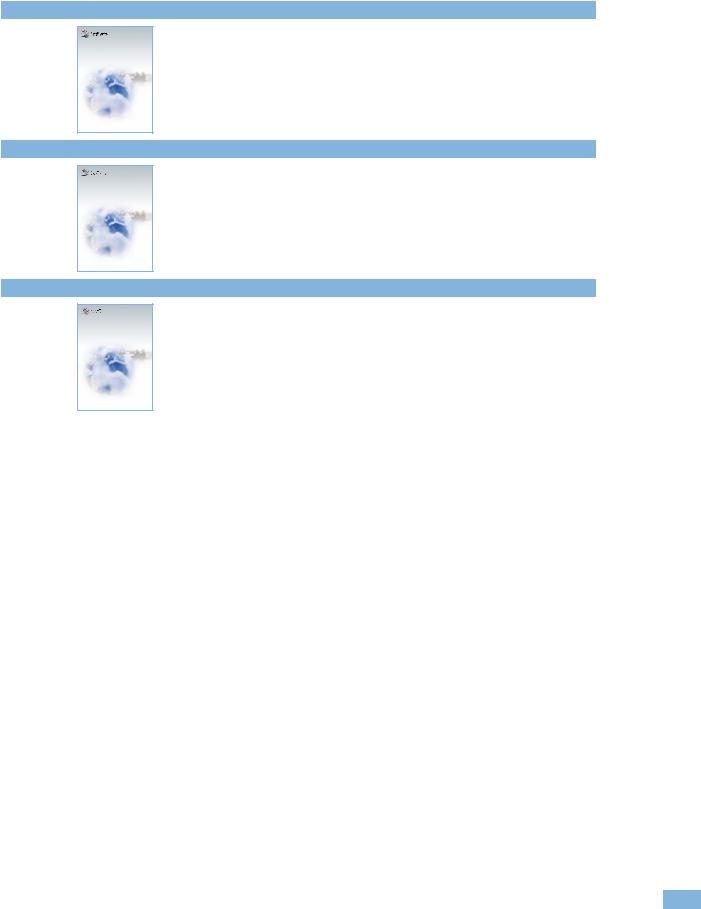
- •Contents
- •Executive summary
- •I. World trade in 2011
- •A. Introduction
- •C. Appendix figures and tables
- •II. Trade and public policies: A closer look at non-tariff measures in the 21st century
- •2. History of NTMs in the GATT/WTO
- •1. Reasons for government intervention and types of measures
- •2. The choice of NTMs in light of domestic and international constraints
- •3. Measures affecting trade in services
- •4. NTMs in the 21st century
- •5. Summary and conclusions
- •C. An inventory of non-tariff measures and services measures
- •1. Sources of information on NTMs and services measures
- •2. Stylized facts about NTMs related to trade in goods
- •3. Services measures
- •4. Conclusions
- •Appendix C.1: Data handling methodology in the UNCTAD’s Trade Analysis Information System (TRAINS)
- •Appendix C.2: Regression results
- •1. Estimating the trade effects of NTMs and services measures
- •2. Disentangling trade effects of TBT/SPS measures and domestic regulation in services
- •3. Harmonization and mutual recognition
- •4. Conclusions
- •Appendix D.1
- •E. International cooperation on non-tariff measures in a globalized world
- •2. Cooperation in specific policy areas: TBT/SPS and services measures
- •3. GATT/WTO disciplines on NTMs as interpreted in dispute settlement
- •4. Adapting the WTO to a world beyond tariffs
- •5. Conclusions
- •F. Conclusions
- •Bibliography
- •Technical notes
- •Abbreviations and symbols
- •List of figures, tables and boxes
- •WTO members
- •Previous World Trade Reports
- •Image credits (cover)

WTO MEMBERS
WTO members
(As of 10 May 2012)
Albania |
The Gambia |
Nicaragua |
Angola |
Georgia |
Niger |
Antigua and Barbuda |
Germany |
Nigeria |
Argentina |
Ghana |
Norway |
Armenia |
Greece |
Oman |
Australia |
Grenada |
Pakistan |
Austria |
Guatemala |
Panama |
Bahrain, Kingdom of |
Guinea |
Papua New Guinea |
Bangladesh |
Guinea-Bissau |
Paraguay |
Barbados |
Guyana |
Peru |
Belgium |
Haiti |
Philippines |
Belize |
Honduras |
Poland |
Benin |
Hong Kong, China |
Portugal |
Bolivia, Plurinational State of |
Hungary |
Qatar |
Botswana |
Iceland |
Romania |
Brazil |
India |
Rwanda |
Brunei Darussalam |
Indonesia |
Saint Kitts and Nevis |
Bulgaria |
Ireland |
Saint Lucia |
Burkina Faso |
Israel |
Saint Vincent & the Grenadines |
Burundi |
Italy |
Samoa |
Cambodia |
Jamaica |
Saudi Arabia, Kingdom of |
Cameroon |
Japan |
Senegal |
Canada |
Jordan |
Sierra Leone |
Cape Verde |
Kenya |
Singapore |
Central African Republic |
Korea, Republic of |
Slovak Republic |
Chad |
Kuwait, the State of |
Slovenia |
Chile |
Kyrgyz Republic |
Solomon Islands |
China |
Latvia |
South Africa |
Colombia |
Lesotho |
Spain |
Congo |
Liechtenstein |
Sri Lanka |
Costa Rica |
Lithuania |
Suriname |
Côte d’Ivoire |
Luxembourg |
Swaziland |
Croatia |
Macao, China |
Sweden |
Cuba |
Madagascar |
Switzerland |
Cyprus |
Malawi |
Chinese Taipei |
Czech Republic |
Malaysia |
Tanzania |
Democratic Republic of the Congo |
Maldives |
Thailand |
Denmark |
Mali |
Togo |
Djibouti |
Malta |
Tonga |
Dominica |
Mauritania |
Trinidad and Tobago |
Dominican Republic |
Mauritius |
Tunisia |
Ecuador |
Mexico |
Turkey |
Egypt |
Moldova, Republic of |
Uganda |
El Salvador |
Mongolia |
Ukraine |
Estonia |
Montenegro |
United Arab Emirates |
European Union |
Morocco |
United Kingdom |
Fiji |
Mozambique |
United States of America |
Finland |
Myanmar |
Uruguay |
Former Yugoslav Republic of |
Namibia |
Venezuela, Bolivarian Republic of |
Macedonia (FYROM) |
Nepal |
Viet Nam |
France |
Netherlands |
Zambia |
Gabon |
New Zealand |
Zimbabwe |
245

world trade report 2012
Previous World Trade Reports
The WTO and preferential trade agreements: From co-existence to coherence
World Trade
Report 2011
The WTO and preferential trade agreements:
From co-existence to coherence
2011
The ever-growing number of preferential trade agreements (PTAs) is a prominent feature of international trade. The Report describes the historical development of PTAs and the current landscape of agreements. It examines why PTAs are established, their economic effects, the contents of the agreements themselves, and the interaction between PTAs and the multilateral trading system.
Trade in natural resources
World Trade
Report 2010
Trade in natural resources
2010
The World Trade Report 2010 focuses on trade in natural resources, such as fuels, forestry, mining and fisheries. The Report examines the characteristics of trade in natural resources, the policy choices available to governments and the role of international cooperation, particularly of the WTO, in the proper management of trade in this sector.
Trade policy commitments and contingency measures
WORLD TRADE
REPORT 2009
Trade Policy Commitments
and Contingency Measures
2009
The 2009 Report examines the range and role of contingency measures available in trade agreements. One of the Report’s main objectives is to analyse whether WTO provisions provide a balance between supplying governments with the necessary flexibility to face difficult economic situations and adequately defining these in a way that limits their use for protectionist purposes.
Trade in a globalizing world
WORLD TRADE
REPORT 2008
Trade in a Globalizing World
2008
The 2008 Report provides a reminder of what we know about the gains from international trade and highlights the challenges arising from higher levels of integration. It addresses the question of what constitutes globalization, what drives it, what benefits it brings, what challenges it poses and what role trade plays in this world of ever-growing inter-dependency.
Sixty years of the multilateral trading system: achievements and challenges
WORLD TRADE REPORT
2007
2007
On 1 January 2008 the multilateral trading system celebrated its 60th anniversary. The World Trade Report 2007 celebrates this landmark anniversary with an indepth look at the General Agreement on Tariffs and Trade (GATT) and its successor the World Trade Organization — their origins, achievements, the challenges they have faced and what the future holds.
Exploring the links between subsidies, trade and the WTO
WORLD TRADE REPORT
2006
2006
The World Trade Report 2006 focuses on how subsidies are defined, what economic theory can tell us about subsidies, why governments use subsidies, the most prominent sectors in which subsidies are applied and the role of the WTO Agreement in regulating subsidies in international trade. The Report also provides brief analytical commentaries on certain topical trade issues.
246

PREVIOUS WORLD TRADE REPORTS
Trade, standards and the WTO
WORLD TRADE REPORT
2005
2005
Coherence
The World Trade Report 2005 seeks to shed light on the various functions and consequences of standards, focusing on the economics of standards in international trade, the institutional setting for standard-setting and conformity assessment, and the role of WTO agreements in reconciling the legitimate policy uses of standards with an open, non-discriminatory trading system.
WORLD TRADE REPORT
2004
2004
The World Trade Report 2004 focuses on the notion of coherence in the analysis of interdependent policies: the interaction between trade and macroeconomic policy, the role of infrastructure in trade and economic development, domestic market structures, governance and institutions, and the role of international cooperation in promoting policy coherence.
Trade and development
WORLD TRADE REPORT
2003 The World Trade Report 2003 focuses on development. It explains the origin of 2003 this issue and offers a framework within which to address the question of the relationship between trade and development, thereby contributing to more
informed discussion.
247
Image credits (cover)
Cover top left – ©Shutterstock/withGod Cover left centre – ©Thinkstock/iStockphoto Cover bottom left – ©Thinkstock/F1online
Cover bottom centre – ©Thinkstock/Image Source Cover bottom right – ©InMagine
Cover image top right – ©Getty/Bloomberg/Contributor
World Trade Organization
154 rue de Lausanne
CH-1211 Geneva 21
Switzerland
Tel: +41 (0)22 739 51 11
Fax: +41 (0)22 739 42 06
www.wto.org
WTO Publications
Email: publications@wto.org
WTO Online Bookshop
http://onlinebookshop.wto.org
Cover designed by triptik Report designed by Services Concept Printed by Atar Roto Presse SA
© World Trade Organization 2012 ISBN 978-92-870-3815-9 Published by the World Trade Organization.

World Trade Report 2012
The World Trade Report 2012 ventures beyond tariffs to examine other policy measures that can affect trade. Regulatory measures for trade in goods and services raise new and pressing challenges for international cooperation in the 21st century. More than many other measures, they reflect public policy goals (such as ensuring the health, safety and well-being of consumers) but they may also be designed and applied in a manner that unnecessarily frustrates trade. The focus of this report is on technical barriers to trade (TBT),sanitary and phytosanitary (SPS) measures (concerning food safety and animal/plant health) and domestic regulation in services.
The Report examines why governments use non-tariff measures (NTMs) and services measures and the extent to which these measures may distort international trade. It looks at the availability of information on NTMs and the latest trends concerning usage.The Report also discusses the impact that NTMs and services measures have on trade and examines how regulatory harmonization and/or mutual recognition of standards may help to reduce any trade-hindering effects.
Finally, the Report discusses international cooperation on NTMs and services measures. It reviews the economic rationale for such cooperation and discusses the efficient design of rules on NTMs in a trade agreement. It examines how cooperation has occurred on TBT/SPS measures and services regulation in the multilateral trading system, and within other international forums and institutions. A legal analysis is provided regarding the treatment of NTMs in WTO dispute system and interpretations of the rules that have emerged in recent international trade disputes. The Report concludes with a discussion of outstanding challenges and key policy implications.
9 789287 038159
